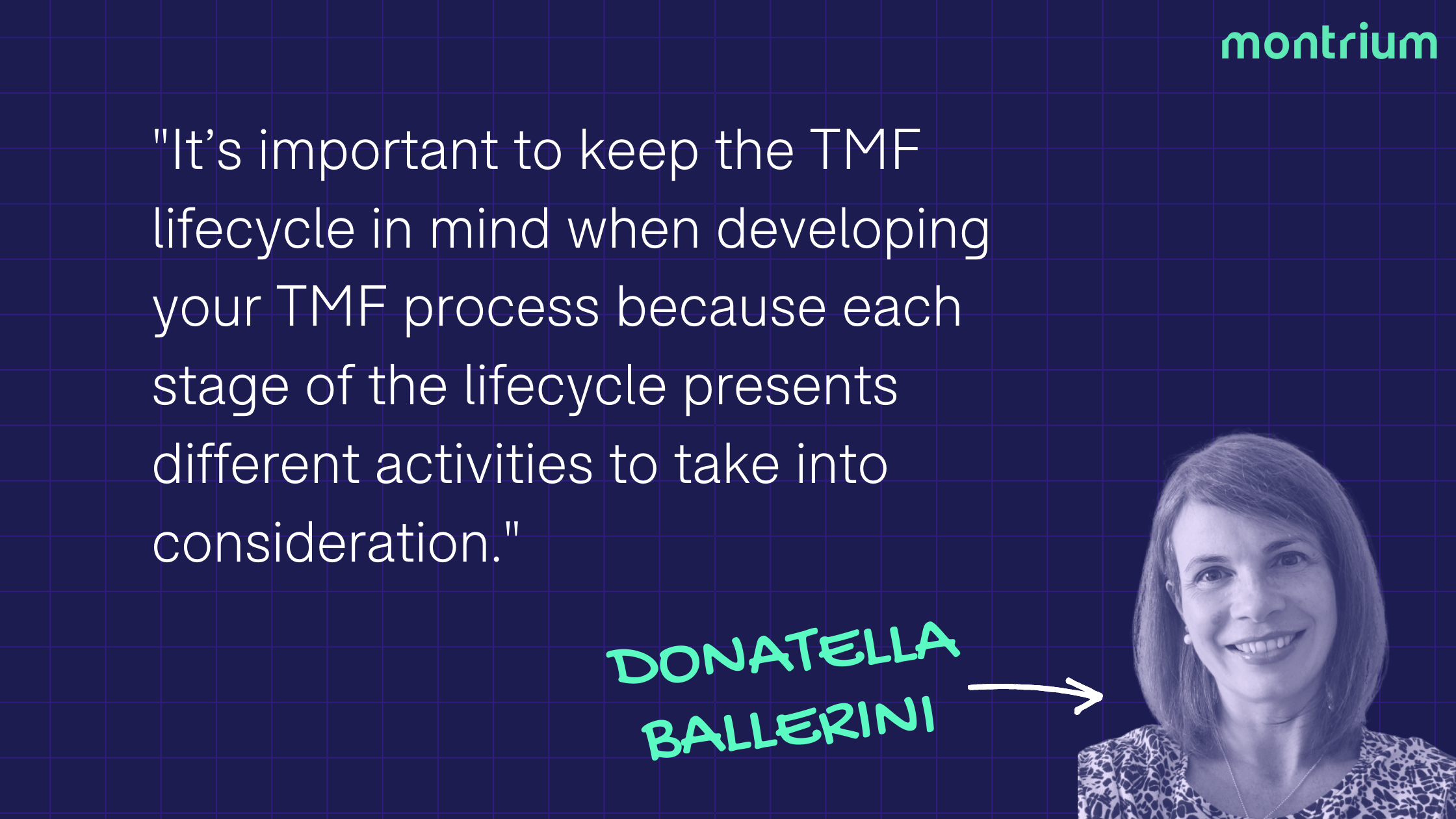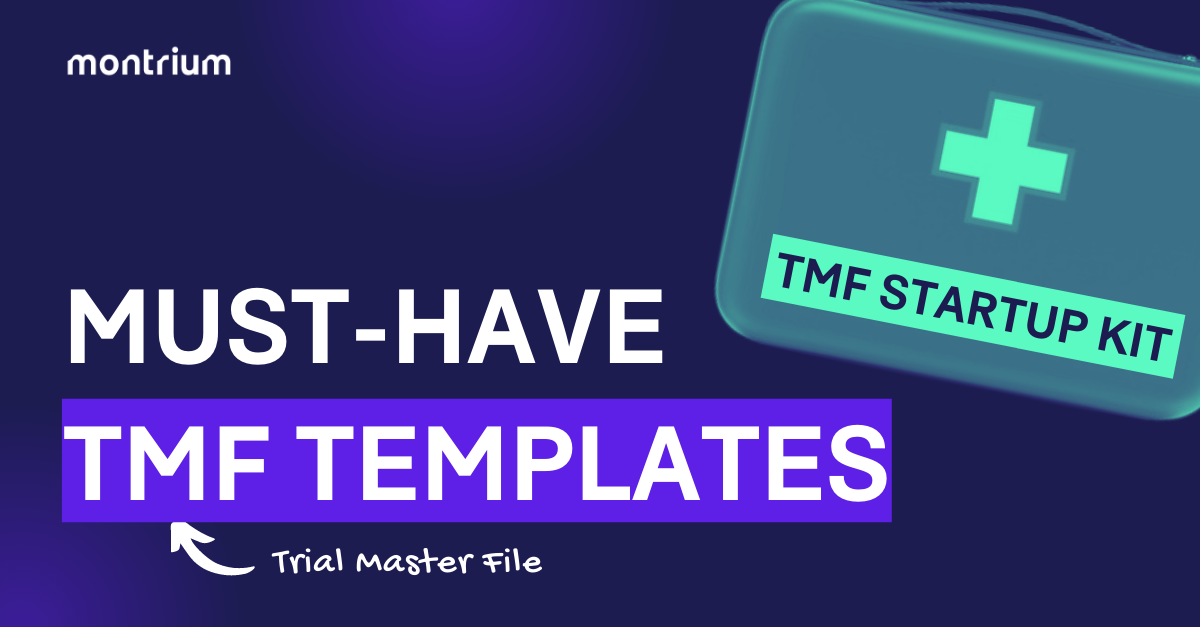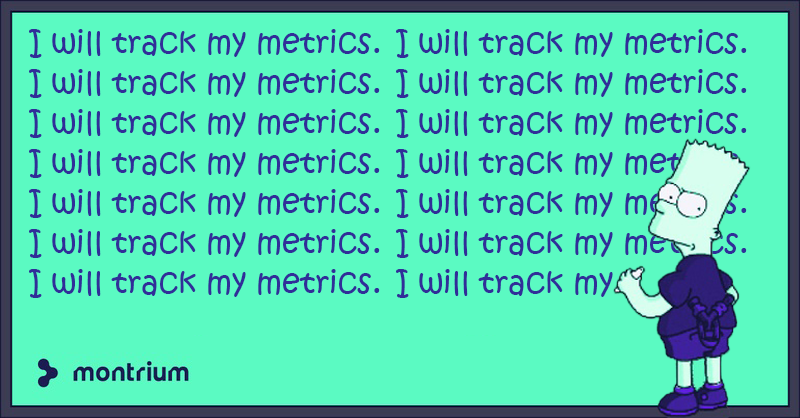.png)
We tend to think about the inspection readiness of a TMF in a rather superficial way. We’ll frequently ask ourselves about the completeness, timeliness, quality, and compliance of the TMF—but we fail to consider what truly drives these outputs. What is it that determines whether your documents are routinely making it into the TMF one time? What is it that guides your level of quality and how compliant you are with the regulatory requirements? The answer: your process. Having a robust TMF management process can truly make or break an inspection.
Processes are everywhere in our day-to-day life, even if we don’t always realize it. Think about a baker who’s preparing a cake. The baker must follow a process—or recipe—in order to complete his final deliverable. And while baking a cake may sound a bit more exciting and delicious (to some) than filing documents in your TMF, they’re both still activities where it’s necessary to follow a process in order to achieve a final deliverable that can withstand a visit from an inspector—the food kind or the regulatory kind.
Keep reading to find out the proven formula for developing a TMF process—along with some best practices for doing so—and how to ensure that your TMF process is expert-approved.
Here's what we'll cover:
- Why is a TMF process so important, anyway?
- How to develop a TMF process from A to Z
- Best practices for creating a robust TMF process
- An expert-approved TMF process
- Key takeaways
Let's get started!
Why is a TMF process so important, anyway?
First, let’s establish why developing a robust, purposeful TMF process is so important. Creating a TMF process is not simply a best practice for achieving your desired objectives—it's also something you need to do in order to have a successful inspection. During the course of a regulatory inspection, inspectors will take into account your process when verifying whether or not your TMF is compliant. Thus, defining a TMF process should be considered an integral part of your overall strategy and you should also have a thorough understanding of the steps that need to be taken to draft this process.
How to develop a TMF process from A to Z
When developing a TMF process, you need to start from the end and work backward—no matter how strange it may sound (or feel). You should start by identifying the goals that you want to achieve with your process. Ask yourself what your objectives are in terms of quality, timeliness, completeness, efficiency, and more. Once you’ve set these goals, then you can move on to more granular objectives that feed into these larger goals and that are more easily measurable. Finally, once you know what you want to achieve, you can create a list of the activities that are necessary to achieve it. 
This diagram gives a high-level overview of how you should begin building out your TMF process, starting with the end goals and working backward from there.
Map your steps for success
Admittedly, process-building can be a pretty big undertaking. There are almost too many points at which you could overlook important gaps or unintentionally create redundant steps. For this reason, it’s helpful to sit down and actually map out your steps. Mapping not only supports you in discovering gaps and ensuring your process is coherent, but it also helps to foster alignment between all of the various TMF stakeholders. In fact, one of the main quality issues when it comes to TMF management arises from having too many contributors who aren’t on the same page. Think about how many different actors there are within the TMF, ranging from clinical operations and pharmacovigilance to statistics (and beyond). If a well-defined process hasn’t been developed—and consequently, if people haven’t been sufficiently trained on it—then you’ll likely see a significant negative impact on the TMF in terms of consistency.
Tying it all together
No TMF process is an island. What I mean by this is that it’s important not to think of your TMF process in a vacuum, but rather as a pillar of TMF management that complements (and is complemented by) people and technology. Think about your standards for managing notes to file or trackers. These two aspects of the TMF are quite often the cause of quality findings because they’re not properly incorporated into the TMF process. This is why it’s necessary to establish a well-defined process from the outset, and to then reinforce this process through people and technology. People need to be engaged from the very beginning; the goal here is to plant the seed of a TMF culture that will propagate throughout the company. And technology? Well, technology supports your process. You need to ensure that your eTMF system has functionalities that help to support a process-driven TMF environment that lends itself to effectiveness and efficiency.
Best practices for creating a robust TMF process
Now, let’s get into some best practices for creating the TMF process of your dreams... 
- Remember the TMF lifecycle: Don’t forget to take the TMF lifecycle into consideration. Just like your trial, the TMF also goes through different stages: start-up, conduct, and closure. For each of these stages, there are specific activities that need to be carried out. Assessing each stage in detail will help to support the development of a robust process that ensures a complete and compliant TMF.
- Never stop improving: Once you have your TMF process more or less in place, you need to keep in mind that continuous improvement will be necessary. There is always space for improvement. After your process is up and running, don’t forget to check in regularly in order to review it and verify whether it’s aligned with the real day-to-day activities that people are carrying it out. If it’s not aligned, then adjust it! This could happen after an audit, or even before one while you’re preparing for it.
- Training is key: People need to be trained not only on the company SOPs and the eTMF system that you’re using, but also on TMF topics such as GCP, risk-based approaches, document QC, and more. This is an important intersection of people and process.
- Think globally: Speaking of people and process, you should always keep the three pillars of TMF management (being people, process, and technology) in mind. By combining these three elements, you will craft the perfect, well-oiled, inspection-passing machine.
.png?width=2240&height=1260&name=END%20GOAL%20(2).png)
Here are the four expert tips for building your TMF process that you should always keep in mind!
By now, we’ve gone over how to develop a TMF process and best practices for doing so. But do you feel 100% confident in going out there and drafting one all on your own? If you answered “not quite”, then you’re far from alone—in fact, you’re probably in the majority. So, we’re going to share how you can get support in creating an expert-approved TMF process without burning yourself out.
An expert-approved TMF process
If you want (or need) help creating a high-calibre TMF process that will give you peace of mind, just ask! Montrium’s eTMF Services team offers expert-crafted training packages designed to boost TMF culture across your organization. The training is customized to your organization’s level of TMF maturity and is combined with hands-on workshops that allow you to put what you learned into action, with real results. Based on your unique needs, we can get everyone in your team up to speed on inspection preparation, risk-based approaches, QC, and a host of other crucial TMF training topics—all with the outcome of helping you acquire the knowledge and experience necessary to develop and maintain a robust, expert-approved TMF process.
Key takeaways
- A robust TMF process isn’t just a nice-to-have, it’s a must-have! Inspectors will be looking at your TMF process while conducting an inspection
- When developing a TMF process, you need to start by defining your end goals and then working backward to determine the activities necessary to achieve those goals
- While creating your TMF process, consider mapping your steps out in order to identify gaps and avoid redundancy
- Don’t think of your TMF process in isolation, but rather as one of the complementary pillars of TMF management (in addition to people and technology)
- Adopt a mindset of continuous improvement—whether that be adjusting your process or up-skilling your team
- The best way to develop an expert-approved TMF process is to ask the experts themselves; reach out to Montrium’s eTMF Services to find out how we can help!
Need some help building your TMF process? Our experts are just a click away 👇 
.jpg)
Donatella Ballerini
Donatella Ballerini is the Head of eTMF Services at Montrium. She has over 12 years of experience in the clinical trial space and previously served as Head of the GCP Compliance and Clinical Trial Administration Unit at Chiesi Farmaceutici. She specializes in ensuring the compliance of all clinical operations processes with ICH-GCP and guaranteeing continuous inspection readiness of the TMF.






-1.png)


-1.png)
.png)
.jpg)
.jpg)
-1.png)
